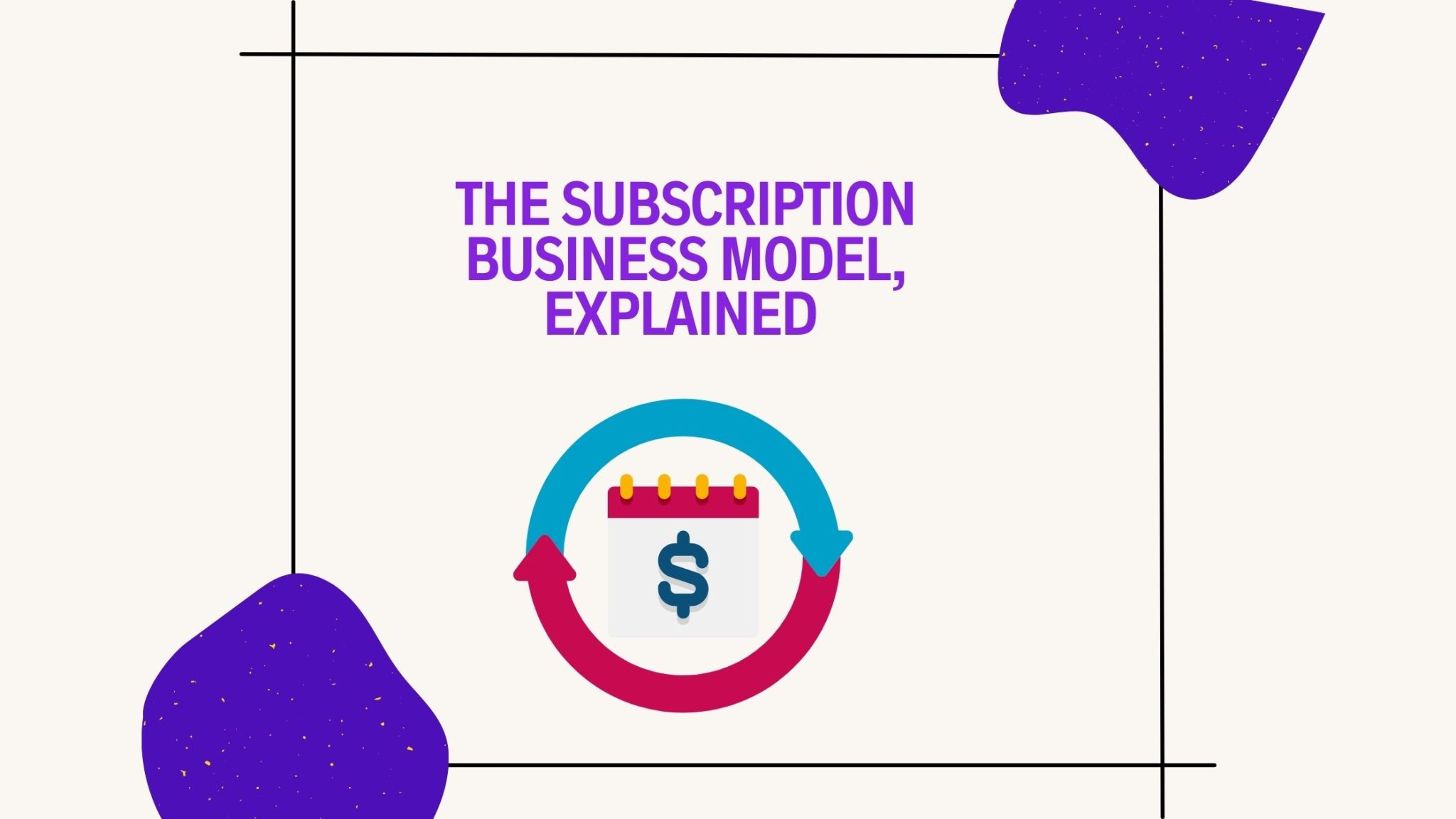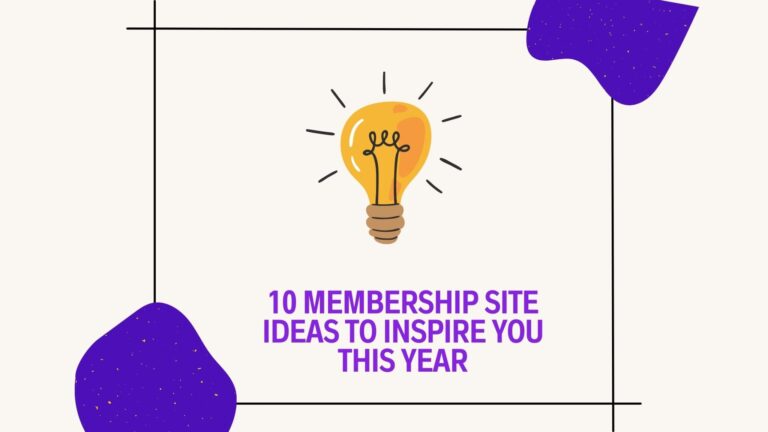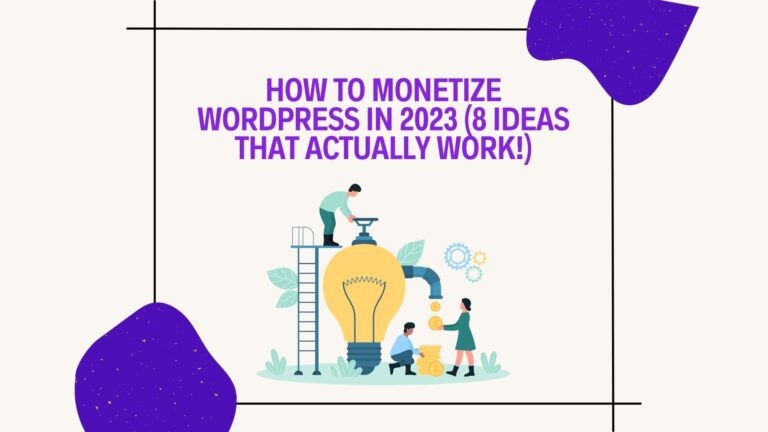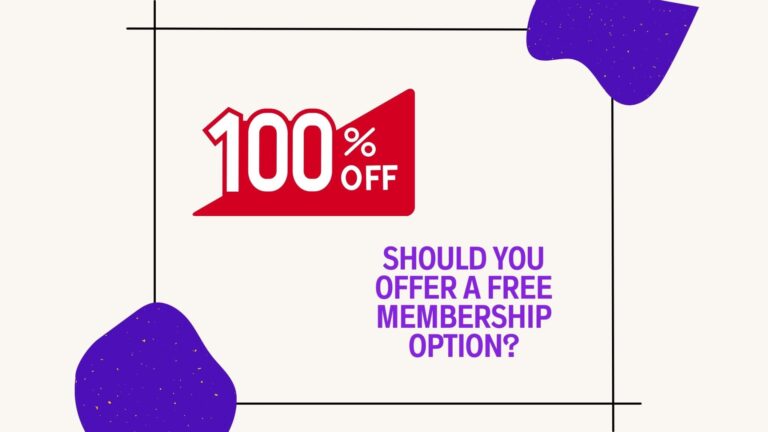Imagine you could build a business model that makes money while you sleep. Something you could create once, maintain, and then simply promote to make sure you reach your revenue goals? If the answer is “yes” or if we have stirred your curiosity, learn that a subscription business model might be just what you need.
What is that, how do subscription businesses work, and what could you do to build one?
Read on and find out more.
What Is a Subscription Business Model?
A subscription business model is a type of business model where customers pay to access and use certain products or services, typically on an ongoing basis.
In this model, customers pay a set fee monthly, quarterly, or annually for access to products or services. In exchange for the subscription fee, they can access certain features and use them if they keep paying the subscription cost. Once they cancel their subscription, they will not have access to the services anymore.
How Subscription Business Models Work
In essence, the subscription business model is based on a simple idea. If multiple people pool their money together, they can pay for services and products they wouldn’t otherwise be able to access. Thus, when enough people sign up for a subscription service, it becomes possible for the business to offer those services or products at an affordable price.
Netflix, Hulu, and other video streaming services are prime examples of how this works. Subscribers pay a relatively low fee; in return, they can access a vast library of movies and series. The reason this is possible is precisely because everyone contributes to the movie library, every month. This is a case in point: Netflix’s revenue for 2022 amassed no less than $31.6 billion from a subscription service with the highest pricing tier of around $15/ month.
Netflix is, of course, in a league of its own — but the fact remains: subscription businesses can offer an expansive array of products and services at a fraction of the cost.
Top Benefits of a Subscription Business Model
The subscription business model is a win-win: consumers/ clients win access to a service that would’ve been more expensive (and limiting), and businesses enjoy many advantages that make it worth their investment.
Here are some of the most important advantages of a subscription business model:
More Predictable Revenue
With a subscription model, businesses can have more predictable revenue streams since they know how much money they will make monthly. This makes planning budgets, investments, and developing new products or services easier.
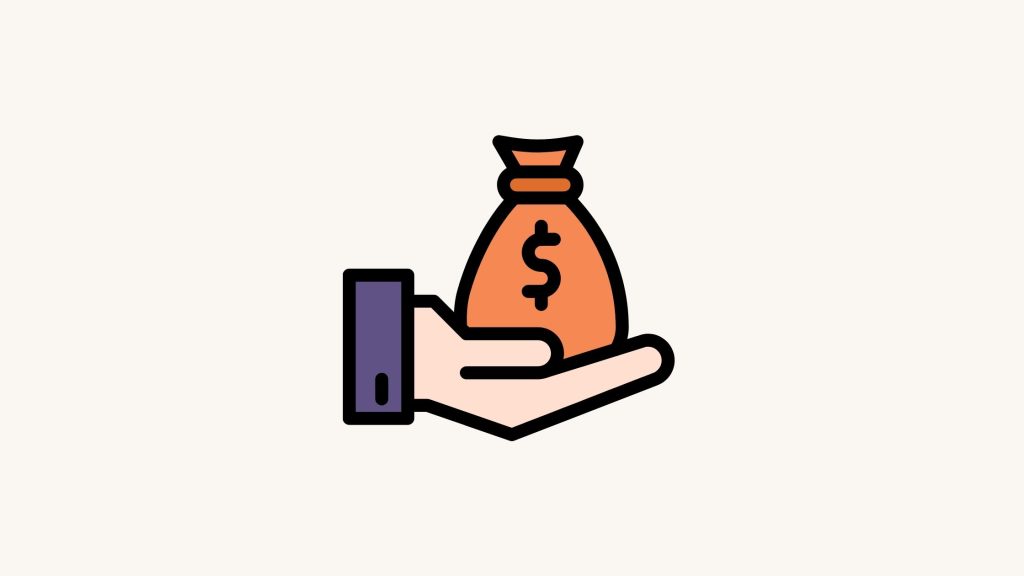
Spending Less on Customer Retention
Keeping current customers on board with subscription models is easy since the costs are low and renewal is automatic. Businesses don’t have to spend a lot of money on marketing campaigns to get customers to stay with them.
Improved Customer Relationships
Building and maintaining relationships is easier when people are not just occasional customers. When you serve someone for a long time, you know what they are expecting. Plus, by extrapolating statistically relevant data, you can also better understand what other customers in the same target audience would expect from you.
Cross-sell & Upsell Opportunities
It’s much easier to convince someone who has already purchased one of your products or services to buy another one. This is why the subscription model often leads to increased sales. Plus, discounts on other products and services can be offered to customers who stay with you longer.
Sustainability
The subscription model also makes businesses more sustainable. Companies can reduce waste and conserve resources since they don’t have to produce as many products. Also, customers are more likely to use a product or service for longer if they have paid for it, leading to better customer retention and less waste.
Subscription Business Model Examples
“Subscription business” is frequently used as an umbrella term for a lot of types of business models based on a recurring revenue system. Still, some of the most common (and successful) subscription business model examples include:
Magazine and Newsletter Subscriptions
Likely one of the oldest subscription business model in the world, magazines and newsletters offer their subscribers a monthly or yearly bundle of articles, content pieces, opinions, etc. Back in the day, this meant delivering physical magazines and newspapers to the customer’s doorstep. Nowadays, however, increasingly more magazines and newspapers are embracing digitization. What’s more, many publications are even born online (and newsletters are among some of the most popular formats.)
Subscription Boxes
Subscription boxes are among the most convenient and personalized subscription services. These special monthly bundles of subscription-based products are sent directly to customers’ homes. Usually, the contents of such boxes are tailor-made for individual customers’ needs and preferences, although some types of subscription boxes involve random selections as well.

Software Subscriptions
Software has also been successfully monetized through the subscription model — so much so that Customers can pay a set fee to access regularly updated software with new features and bug fixes. This way, customers don’t have to purchase a full-priced program and keep buying new versions every few years.
Music & Video Streaming Subscriptions
Music and video streaming services are among the most successful subscription-based business models. Netflix, Spotify, Apple Music, etc., require users to pay a monthly fee if they want to continue streaming content.
Food Delivery Services
Food delivery services are also a great example of the subscription model. For instance, some of these services (like Blue Apron) will deliver the ingredients and recipes for various meals regularly.
Health & Wellness
More and more health & wellness subscription boxes have been popping up in recent years. These are usually tailored to individuals or couples, including supplements, snacks, and other health-related items.
Membership Sites and Subscription Businesses: A Match Made in Heaven
Membership sites are a great way to leverage the subscription business model. Not only will you be able to offer value to your customers regularly, but you can also use your membership platform to build a community of paying members. This way, you can generate even more value and keep customers returning.
Some popular membership site ideas that work on a subscription business model include:
- Online courses
- Forums and discussion groups
- Blogs and magazines
- Coaching services
- Online fitness training
- Networking groups
- Online cooking classes
Top Elements You Need for a Successful Subscription Business
Subscription businesses tend to be successful (for all the reasons mentioned earlier in this article.) However, embracing a subscription business model is not a guarantee for success. To make sure your subscription business model actually works, keep the following elements in mind:
Product-Market Fit
Your subscription business model must be based on a product or service that people want. You need to make sure there is enough demand, and you can provide the necessary value to make people want to stay.
Pricing Strategy
It’s essential to choose the right pricing strategy for your subscription business. You must consider various factors such as competition, market trends, and customer expectations.
Customer Service
Customer service needs to be top-notch when it comes to subscription businesses. Customers who are unsatisfied with the service will unsubscribe, and your business will suffer.

Measuring the Right KPIs
To be successful, you need to measure the right Key Performance Indicators (KPIs). Identify what metrics best measure customer success and use them to improve your service. Some of the most important KPIs include:
MRR (Monthly Recurring Revenue)
The MRR is calculated by taking the total amount of recurring revenue generated from subscriptions in a given month. This number will help you understand how much money you bring in monthly.
ARR (Annual Recurring Revenue)
The ARR is calculated using the total recurring revenue generated in a given year. This metric will help you understand your growth rate and customer retention rate.
ARPU (Average Revenue per User)
The ARPU is calculated by taking the total recurring revenue in a given time period and dividing it by the number of active customers. This KPI will give you an understanding of the average revenue generated per customer.
CLTV (Customer Lifetime Value)
Your CLTV is defined as the total revenue a customer will generate during their lifetime. This metric is essential for understanding your customers’ value and optimizing it as much as possible.
CAC (Customer Acquisition Cost)
Your business CAC is calculated by taking the total cost of acquiring new customers in a given period and dividing it by the number of new customers. This metric will help you understand how much it costs to acquire new customers and ensure you’re not losing money.
Churn Rate
Since this is one of the biggest dangers in the growth and development of subscription businesses, keeping an eye on your churn rate is essential. This metric will tell you how many customers are unsubscribing from your service.
Conclusion
The subscription business model is undoubtedly one of the most efficient and lucrative ways to monetize products and services. However, just because you’re choosing a subscription business model, it doesn’t mean it will be automatically successful. Vision, hard work, and, more than anything, commitment are all important to growing your membership business.
You May Also Like
How to Pick the Right Membership Model for Your Goals
Membership Software: A Short Guide for New Membership Site Entrepreneurs
Top 11 Examples of Membership Sites to Inspire Your Next Project
Exploring the Best WordPress LMS Plugins for Building a Successful Membership Site

